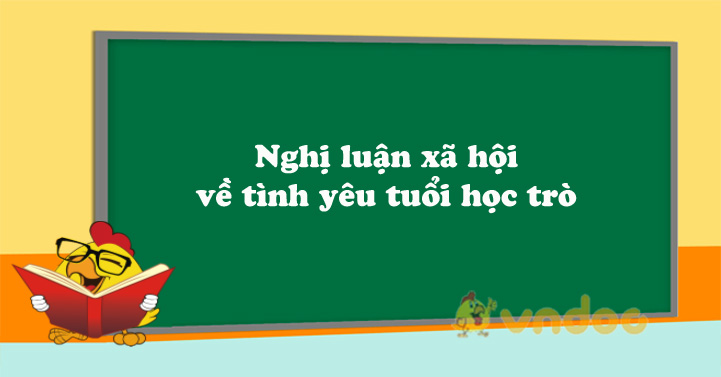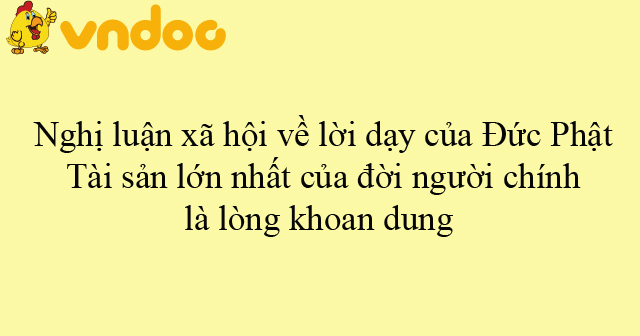|
ĐỀ SỐ 15 ««««« |
ĐỀ THI THỬ THPT QG NĂM HỌC 2020 Môn: Tiếng anh Thời gian làm bài: 60 phút, không kể thời gian phát đề |
Mark the letter A, B, C, or D on your answer sheet to indicate the word whose underlined part differs from the other three in pronunciation in each of the following questions.
Question 1. A. mother B. thunder C. within D. wither
Question 2. A. mineral B. mitigate C. minimize D. minor
Mark the letter A, B, C, or D on your answer sheet to indicate the word that differs from the other three in the position of primary stress in each of the following questions.
Question 3. A. pollution B. computer C. currency D. allowance
Question 4. A. punctuality B. technological C. characteristic D. representative
Mark the letter A, B, C, or D on your answer sheet to indicate the correct answer to each of the following questions.
Question 5. The house _________ the earthquake but then _________ by a fire.
A. survived - was destroyed B. was survived - destroyed
C. survived - destroyed D. was survived - was destroyed
Question 6. _________ is the existence of a large number of different kinds of animals and plants which make a balanced environment.
A. extinction B. biodiversity C. habitat D. conservation
Question 7. He joined the English club, _________ were over 50 years old.
A. most of its members B. most of which
C. most of whom D. most of whose members
Question 8. Nobody phoned while I was out, _________ ?
A. wasn’t I B. was I C. did they D. didn’t they
Question 9. This book provides students _________ useful tips that help them to pass the coming exam.
A. at B. about C. for D. with
Question 10. Action movies may have a negative _________ on children.
A. opinion B. influence C. dependence D. decision
Question 11. It’s a secret. You _________ let anyone know about it.
A. mustn’t B. needn’t C. mightn’t D. may not
Question 12. The new manager laid down very strict rules as soon as he had _________ the position. A. taken over B. come over C. taken up D. taken off
Question 13. There were many politicians at the meeting, several of _________ were very young.
A. that B. whom C. who D. which
Question 14. Thanks to the laser beams, at last, he could get rid of the _________ birthmark on his face.
A. normal B. abnormal C. abnormality D. abnormally
Question 15. Only when you grow up, _________ the truth.
A. you will know B. you know C. do you know D. will you know
Question 16. _________ over long distances is a fact that everyone knows.
A. That electricity transmitting B. That electricity can be transmitted
C. That electricity D. That can be transmitted
Question 17. David is a rich man because he _________ a lot of money last year.
A. went through B. checked in C. fell behind D. came into
Question 18. Widespread forest destruction _________ in this particular area.
A. must have seen B. ought to see C. could have seen D. can be seen
Mark the letter A, B, C, or D on your answer sheet to indicate the word(s) CLOSEST in meaning to the underlined word(s) in each of the following questions.
Question 19. Talking about your feeling can help you get clear about what you feel.
A. control B. banish C. get rid of D. figure out
Question 20. The swimmer dived into the pool at one end and swam under water to the other end, where she emerged from the water.
A. came out B. dried off
C. sank to the bottom D. injured herself
Mark the letter A, B, C, or D on your answer sheet to indicate the word(s) OPPOSITE in meaning to the underlined word(s) in each of the following questions.
Question 21. We should husband our resources to make sure we can make it through these hard times.
A. spend B. manage C. use up D. marry
Question 22. Sorry, I can’t come to your birthday party. I am snowed under with work now.
A. relaxed about B. busy with C. interested in D. free from
Mark the letter A, B, C, or D on your answer sheet to indicate the option that best completes each of the following exchanges.
Question 23. Mr David is having dinner with his friend in a restaurant.
- Mr David: “Could you bring me some water?”
- Waiter: “____________”
A. No, thanks. B. Of course you can. C. I’m afraid not. D. Certainly, sir.
Question 24. Huy was asking Mai, his classmate, for her opinion about the book he had lent her.
- Huy: “What do you think about the book?”
- Mai: “_________________”
A. Yes, let’s read it together. B. The best I’ve ever read!
C. I can’t agree with you more. D. I wish I could buy one.
Read the following passage and mark the letter A, B, C, or D on your answer sheet to indicate the correct word or phrase that best fits each of the numbered blanks from 25 to 29.
The UK Government ensures that all schools in the UK (25)_________ certain standards, and this includes independent schools as well as those that are (26)_________ by the Government. All qualifications are awarded by national agencies accredited by the Qualification and Curriculum Authority (QCA), (27)_________ the quality of the qualifications you will gain is guaranteed.
At many independent schools in England, you will be encouraged to take part (28)_________ extracurricular activities to develop your hobbies and learn new skills, and you may be encouraged to take graded music exams (29)_________ by the Associated Board of the Royal Schools of Music. The exam grades gained from these are widely accepted toward university entry requirements.
Question 25. A. meet B. notice C. see D. look
Question 26. A. worked B. indicated C. run D. shown
Question 27. A. although B. so C. if D. because
Question 28. A. for B. in C. on D. into
Question 29. A. offered B. to offer C. offering D. offer
Read the following passage and mark the letter A, B, C, or D on your answer sheet to indicate the correct answer to each of the questions from 30 to 34.
In early civilization, citizens were educated informally, usually within the family unit. Education meant simply learning to live. As civilization became more complex, however, education became more formal, structured, and comprehensive. Initial efforts of the ancient Chinese and Greek societies concentrated solely on the education of males. The post-Babylonian Jews and Plato were exceptions to this pattern. Plato was apparently the first significant advocate of the equality of the sexes. Women, in his ideal state, would have the same rights and duties and the same educational opportunities as men. This aspect of Platonic philosophy, however, had little or no effect on education for many centuries, and the concept of a liberal education for men only, which had been espoused by Aristotle, prevailed.
In ancient Rome, the availability of an education was gradually extended to women, but they were taught separately from men. The early Christians and medieval Europeans continued this trend, and single-sex schools for the privileged through classes prevailed through the Reformation period. Gradually, however, education for women, in a separate but equal basis to that provided for men, was becoming a clear responsibility of society. Martin Luther appealed for civil support of schools for all children. A1 the Council of Trent in the 16th century, the Roman Catholic Church encouraged the establishment of free primary schools for children of all classes. The concept of universal primary education, regardless of sex, had been bom, but it was still in the realm of the single-sex school.
In the late 19th and early 20th centuries, co-education became a more widely applied principle of educational philosophy. In Britain, Germany, and the Soviet Union the education of boys and girls in the same classes became an accepted practice. Since World War II, Japan and the Scandinavian countries have also adopted relatively universal co-educational systems. The greatest negative reaction to co-education has been felt in the teaching systems of the Latin countries, where the sexes have usually been separated at both primary and secondary levels, according to local conditions.
A number of studies have indicated that girls seem to perform better overall and in science in particular. In single-sex classes, during the adolescent years, pressure to conform to stereotypical female gender roles may disadvantage girls in traditionally male subjects, making them reluctant to volunteer for experimental work while taking part in lessons. In Britain, academic league tables point to high standards achieved in girls’ schools. Some educationalists, therefore, suggest segregation of the sexes as a good thing, particularly in certain areas, and a number of schools are experimenting with the idea.
Question 30. Ancient education generally focused its efforts on ____________.
A. young people only B. on male learners
C. both sexes D. female learners
Question 31. The first to support the equality of the sexes was ____________
A. the Chinese B. the Jews C. Plato D. the Greek
Question 32. The word “informally” in this context mostly refers to an education occurring ____________
A. in a department B. in classrooms C. ability D. outside the school
Question 33. When education first reached women, they were ____________.
A. separated from men B. locked up in a place with men
C. deprived of opportunities D. isolated from a normal life
Question 34. When the concept of universal primary education was introduced, education ___________
A. was intended for all the sexes B. was intended to leave out female learners
C. was given free to all D. focused on imparting skills
Read the following passage and mark the letter A, B, C, or D on your answer sheet to indicate the correct answer to each of the questions from 35 to 42.
Glass is a remarkable substance made from the simplest raw materials. It can be colored or colorless, monochrome or polychrome, transparent, translucent, or opaque. It is lightweight impermeable to liquids, readily cleaned and reused, durable yet fragile, and often very beautiful Glass can be decorated in multiple ways and its optical properties are exceptional. In all its myriad forms - as table ware, containers, in architecture and design - glass represents a major achievement in the history of technological developments.
Since the Bronze Age about 3,000 B.C. glass has been used for making various kinds of objects. It was first made from a mixture of silica, line and an alkali such as soda or potash, and these remained the basic ingredients of glass until the development of lead glass in the seventeenth century. When heated, the mixture becomes soft and malleable and can be formed by various techniques into a vast array of shapes and sizes. The homogeneous mass thus formed by melting then cools to create glass, but in contrast to most materials formed in this way (metals, for instance), glass lacks the crystalline structure normally associated with solids, and instead retains the random molecular structure of a liquid. In effect, as molten glass cools, it progressively stiffens until rigid, but does so without setting up a network of interlocking crystals customarily associated with that process. This is why glass shatters so easily when dealt a blow. Why glass deteriorates over time, especially when exposed to moisture, and why glassware must be slowly reheated and uniformly cooled after manufacture to release internal stresses induced by uneven cooling.
Another unusual feature of glass is the manner in which its viscosity changes as it turns from a cold substance into a hot, ductile liquid. Unlike metals that flow or “freeze” at specific temperatures glass progressively softens as the temperature rises, going through varying stages of malleability until it flows like a thick syrup. Each stage of malleability allows the glass to be manipulated into various forms, by different techniques, and if suddenly cooled the object retains the shape achieved at that point. Glass is thus amenable to a greater number of heat-forming techniques than most other materials.
Question 35. Why does the author list the characteristics of glass in paragraph 1?
A. to demonstrate how glass evolved
B to show the versatility of glass
C. to explain glassmaking technology
D. to explain the purpose of each component of glass
Question 36. The word “durable‘“ in paragraph 1 is closest in meaning to ___________.
A. lasting B. delicate C. heavy D. plain
Question 37. What does the author imply about the raw materials used to make glass?
A. They were the same for centuries. B. They are liquid.
C. They are transparent. D. They are very heavy.
Question 38. According to the passage, how is glass that has cooled and become rigid different from most other rigid substances?
A. It has an interlocking crystal network. B. It has an unusually low melting temperature.
C. It has varying physical properties. D. It has a random molecular structure.
Question 39. The words “exposed to” in paragraph 2 most likely mean _____________.
A. hardened by B. chilled with C. subjected to D. deprived of
Question 40. What must be done to release the internal stresses that build up in glass products during manufacture?
A. The glass must be reheated and evenly cooled.
B. The glass must be cooled quickly.
C. The glass must be kept moist until cooled.
D. The glass must be shaped to its desired form immediately.
Question 41. The word “it” in paragraph 3 refers to ____________.
A. feature B. glass C. manner D. viscosity
Question 42. According to the passage, why can glass be more easily shaped into specific forms than can metals.
A. It resists breaking when heated.
B. It has better optical properties.
C. It retains heat while its viscosity changes.
D. It gradually becomes softer as its temperature rises.
Mark the letter A, B, C, or D on your answer sheet to indicate the underlined part that needs correction in each of the following questions.
Question 43. Next week, when there (A) will be an English club (B) held here, I (C) will give you more information (D) about it.
Question 44. There are (A) very large rooms (B) with (C) beautiful (D) decorated walls in her new house.
Question 45. (A) More than ten students (B) have failed the exam, (C) that surprised (D) the class teacher.
Mark the letter A, B, C, or D on your answer sheet to indicate the sentence that is closest in meaning to each of the following questions.
Question 46. “I will come back early. I really will!”. She said.
A. She promised to come back early. B. She reminded me to come back early.
C. She refused to come back early. D. She offered to come back early.
Question 47. Susan is tired now because she got caught in the rain last night.
A. If Susan got caught in the rain last night, she would be tired.
B. If Susan hadn’t got caught in the rain last night, she wouldn’t be tired now.
C. If Susan hadn’t got caught in the rain last night, she wouldn’t have been tired.
D. Susan got caught in the rain last night and she still felt tired.
Question 48. No one in our club can speak English as fluently as Mai.
A. Mai is the worst English speaker in our club.
B. Mai speaks English the most fluently in our club.
C. Mai speaks English as fluently as other people in our club.
D. Mai speaks English more fluently than no one in our club.
Mark the letter A, B, C, or D on your answer sheet to indicate the sentence that best combines each pair of sentences in the following questions.
Question 49. Smoking is an extremely harmful habit. You should give it up immediately.
A. As smoking is an extremely harmful habit, you should give it up immediately.
B. When you give up smoking immediately, your health will be affected with this harmful habit.
C. Stop your smoking immediately so it will become one of your extremely harmful habits.
D. You should give up smoking immediately and you will fall into an extremely harmful habit.
Question 50. The storm was so great. Many families had to be evacuated to safer parts of the city.
A. Although the storm was not great, many families had to be evacuated to safer parts of the city.
B. So great was the storm that many families had to be evacuated to safer parts of the city.
C. Many families had to be evacuated to safer parts of the city in spite of the great storm.
D. It was so a great storm that many families had to be evacuated to safer parts of the city.
Đáp án
|
1-B |
2-D |
3-C |
4-C |
5-A |
6-B |
7-D |
8-C |
9-D |
10-B |
|
11-A |
12-A |
13-B |
14-B |
15-D |
16-B |
17-D |
18-D |
19-D |
20-A |
|
21-C |
22-D |
23-D |
24-B |
25-A |
26-C |
27-B |
28-B |
29-A |
30-B |
|
31-C |
32-D |
33-A |
34-A |
35-B |
36-A |
37-A |
38-D |
39-C |
40-A |
|
41-B |
42-D |
43-A |
44-C |
45-C |
46-A |
47-B |
48-B |
49-A |
50-B |


.jpg)
.jpg)

